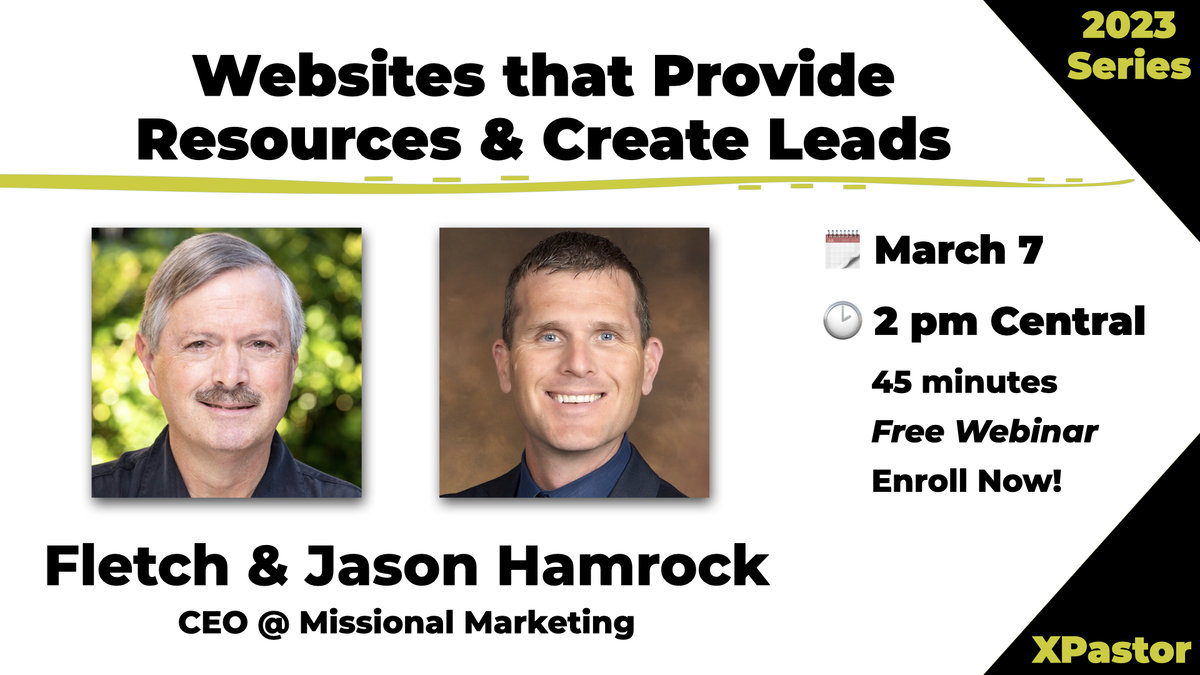Traveling down the highway at sixty miles per hour, you see a church sign and think “That looks great.” A minute later, another church sign comes into view and you confess, “What a garbled mess! I couldn’t read it” or “Boy, is that out of date.” That second church is ready for re-branding. Branding is the words and graphics that cogently and memorably produce awareness of your church.
We are visually stimulated with hundreds of brands each day. Because of this, this article will look at both business and church brands, focusing on principles of church re-branding. There are plenty of web links too, so check out the original images.
Before we go too far, let’s personalize this story:
- What is the logo and tagline of your church? From memory, can you sketch your logo? Can you correctly write the tagline, such as “every believer a minister?”
- What is the feel of your church sign? Is your current “brand” designed for 20 year members or newcomers, traditional or contemporary style?
- Preaching pastors are quite intentional with the direction of each sermon. Are you being equally intentional with your main sign, directional signs, logo, letterhead and business cards?
Re-branding is the process of giving your church a new graphic image and moniker, identifier to your ministry. As we shall soon see, for almost every church it is safe to use the term “re-branding” and not just “branding.” First, let’s get some perspective on brands.
The Wild West and Modern Day Brands
If we look at the days of the Wild West, branding is the process of putting your stamp on your herd. In your county or state, people knew that the herd with the “R and arrow” belonged to the Christian family. The Herrings did “L S” and the Mastersons branded with a stylized “y.” When you saw that cow, you knew who owned it. Brands are simple, easy to spot and memorable.
The Devil’s Rope Museum (barbwiremuseum.com) gives pictures of old cattle brands:

In talking about livestock brands, Cowboy Showcase says “each brand is by necessity different than all the others and often conveys the character of the owner” (www.cowboyshowcase.com/brands.htm).
Can you conjure the image of the brands of these companies?
- Coca-Cola—two stylized words in red or white letters, www.coca-cola.com
- Intel—the ubiquitous stickers on your computer, www.intel.com
- Mercedes Benz—elegance and German precision, www.mercedes-benz.com
- Playboy—the bunny ears now symbolize hedonism; let’s not post that link!
- Nike—just one curved line for the brand! www.nike.com
- Starbucks—green ink, white letters and a unique drawing, www.starbucks.com
Check your mental images with the real ones. What makes these brands memorable? Good brands have a combination of memorable icons, consistent colors, and simplicity. Further, they are plastered on everything that the company produces—shirts, shoes, cars, websites, every computer that has an Intel chip, business cards, main signs, directional signs, main products and sub-components, entry doors to the office building, etc.
Designing a New Brand
Only church planters get the opportunity to design a new “brand” for a church. Phil Taylor, Executive Pastor with the newly-planted Terra Nova church, works with the Acts 29 church planting movement, www.acts29network.org. Phil said, “New churches get to define their public persona through art, media, web presence, advertising and by creating a missional footprint.” Only the church planter gets to design a new brand. All the rest of us will be re-branding.
What happens if a new church doesn’t brand itself? As Phil commented, “If you don’t define your church for the culture around you, someone else will, bottom line.” The church planter gets a tabula rasa, the infamous blank slate, on which to create at will. If the task of logos and mantras is omitted, then others will nickname your church. These may range from “You’re the church on the hill,” to the menacing, “You’re the church that snarls neighborhood traffic—my kids call you the car church.” Your community may begin the branding process for you! Get ahead with your positive message rather than what others may give you.
Many churches have unintentional internal branding. The church got started and no one thought about the graphic “look and feel.” Phil Taylor says, “Older churches come with branding baggage accumulated through years of public mishaps, poor leadership and unarticulated vision.” Along came some church secretary who scissor-cut a graphic from one of those dime-a-dozen books with stolid logos. Before you knew it, that cheap “cross on a hill” line art was used by the youth, the young singles, then it magically appeared on church stationery and business cards. Without much thought, it became a part of the church legacy and culture.
Often the church logo was created so long ago that no one knows from where it came. I served in a church that had a fine logo for the 1970’s. But, by the 1990’s it was terribly out-of-date. The logo had a Star Wars three-dimensional feel with the church initials and a cross sloping upwards. The light blue stationery even matched the carpet in the worship center. Wonderful stuff—maybe—and dated. One day as I was talking with a vice-president at an enormous bank, I chided the logo. “Doesn’t that look tired and out of touch?” Ooops. He gently informed me that he had designed it twenty years prior! I had to eject my foot from my mouth and try to apologize. So a word to the wise: be judicious in your critique about someone’s magnum opus from twenty years ago.
Watermark Community Church was planted in 2001 and immediately created a strong brand (www.watermark.org). They chose a “W” surrounded by a square and put it on everything. It looks like it could be used on cattle—and that’s a plus in Texas! Watermark didn’t push a tag-line with the logo, which is akin to what Starbucks does, www.starbucks.com. Phil Taylor’s church plant also has a strong brand, (Terra Nova Church). They used three iconic circles, representing their key values. You might say, “very graphic, easy to look at, metaphoric, post-modern.”
Revitalizing Old Brands
Many churches have an “old brand.” These old brands were carefully developed decades earlier and can have an amount of historic appeal. But somehow, they have lost sparkle for today’s audience. Some old brands can be kept but need polishing.
Pallavi Gogoi writes in Old Brands, Renewed Appeal: “Remember Spam, that mystery meat in a can? Does Popeye ring any bells? How about White Castle burgers? Marketers are revving up the publicity machine to turn these darlings of yesteryear into 21st century stars” (www.businessweek.com). As that article was written in 2004, are you more familiar with those brands in 2008? You can’t reinvent Spam when one meaning of spam is ubiquitous junk email.
Gogoi concludes the article by saying, “For all these brands, it’s back to the future.” Some churches have historic logos or catch-phrases that can be honed, polished or spruced up. Retro is in, so there is plenty of social acceptance for a historic logo. But, the challenge is making it modern enough while still keeping the historic parts intact.
Harvard Business School addressed rejuvenating old brands. In Second Act for Old Brands: “David Shorrock, Director of DB Capital Partners, said his company prefers to search out the kind of product that big companies like Procter & Gamble tend to ignore, minimizing competitive risk … But some products are harder to work with than others. Take Prell shampoo. Although Prell was a well-recognized brand when DB Capital acquired it, the product had to compete against many other shampoos saturating the market … By contrast, the company scored a success in turning around Comet cleanser. With relatively few competitors, DB Capital was able to reinvigorate the brand and take a large share of the market for less cost.” http://hbswk.hbs.edu/archive/4019.html
The church is not looking for a “profit,” but we are looking to impact lives. So let’s learn from successful business practices. The HBS material shows that rejuvenating an old brand is risky and may not raise community awareness. If you choose to polish your old church logo, will people say “same ol’, same ol’?” To put it in a biblical metaphor, will it be new wine in an old wineskin? The business illustrations help raise questions for churches:
- What differentiates your church from others in your city? Is your greatest strength being a seeker-targeted, community service, teaching or evangelism church?
- How might a new logo help or hurt you?
- What is the gap between your current logo and reality? If you don’t have a well-defined logo, what will a re-brand accomplish for you?
Let’s consider a successful polishing of an old brand. Remember how the Jack in the Box fast food chain looked in the 1960’s? When going through the drive-thru lane, many people didn’t like giving their order to a microphone hidden inside a clown. Conway Hill comments, “So in 1980, Jack in the Box ‘blew up the clown’ on national television—a symbolic move aimed at letting the public know that they were turning over a new leaf, becoming more ‘mature,’ and preparing to serve a better product. With the clown a distant memory and new CEO ‘Jack’ leading the way, they have become a leader in innovation within the fast food industry” (www.hellenicathletes.com). While they did blow up the clown, it was resurrected in CEO Jack. The brand wasn’t demolished but burnished. The clown wasn’t obliterated but celebrated.
You may successfully polish your old logo. You may need to demolish it in one form and resurrect it in another, aka Jack. Your existing logo may look like most churches in your city or it may be passé. Either way, people will have difficulty remembering it and your church. Visitors may skip your church because they perceive you are like everybody else, saying “Why not go to a church closer to home?” While your church wants to avoid the pitfalls of marketing and selling, it would do well to consider how the community views your church.
Principles of Church Branding
In this article we have begun to look at branding and re-branding. Like the brands used in the Wild West, a good brand need to be distinctive and show the uniqueness of the owner. Successful brands in business have a magic combination of a memorable icon, consistent colors and simplicity.
Brands need to be plastered on everything, from signs to letterheads, from windows to doors. People like seeing that the church knows itself. And, if you don’t give yourself a brand, then others will. Brand yourself before you get a nickname!
You may want to consider rejuvenating your brand. Be warned: it may not work. If successful, then you have carried forward a wonderful sense of history. If you fail, then “same ol, same ol” will prevail and turn people off even more. By being retro, you could be avant-garde or just passé.
Whatever you do, implement the concept of your brand. If you claim to be a caring church, then be a caring church! If you claim to be authentic, then be it! All the branding or re-branding in the world won’t matter if you don’t live up to your word.
This was also published in the January 2008 edition of Church Executive magazine











